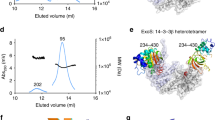Abstract
C3-like exoenzymes are produced by various microorganism including Clostridium botulinum (C3bot), Bacillus cereus and Staphylococcus aureus. C3bot is the prototype of C3-like exoenzymes that specifically ADP-ribosylates and thereby inactivates Rho(A/B/C). C3-like exoenzymes are not yet regarded as virulence factors, as the lack of cell entry domains results in a poor accessibility of the C3-like exoenzymes to cells. In this study, the sensitivity of various cell lines to C3bot has been reinvestigated. Primary monocytes as well as cultured macrophage-like cells including J774A.1 cells and RAW macrophages exhibit a tenfold higher sensitivity to C3bot than fibroblasts and epithelial cells. RhoA ADP-ribosylation by C3bot resulted in the formation of pronounced bipolar protrusions based on defective tail retraction. The formation of bipolar protrusion resulted in inhibited macrophage migration. These findings suggested that macrophages appear to be target cells of C3bot. Migration of macrophage is a prerequiste for their recruitment to the site of pathogen invasion or tissue damage. Inhibition of macrophage migration likely preserves the survival of C3-producing microorganisms. The observations of this study reinforce the paradigm of a role of C3-like exoenzymes as virulence factors.





Similar content being viewed by others
Abbreviations
- C3bot:
-
Exoenzyme C3 from C. botulinum
- IL-2:
-
Interleukin-2
- PI3K:
-
Phosphatidylinositide 3′-OH kinase
- TcdB:
-
Toxin B from the C. difficile strain VPI10463
- TcdBF:
-
Toxin B from the C. difficile serotype F strain 1470.
References
Amano M, Nakayama M, Kaibuchi K (2010) Rho-kinase/ROCK: a key regulator of the cytoskeleton and cell polarity. Cytoskeleton (Hoboken ) 67:545–554
Fahrer J, Kuban J, Heine K, Rupps G, Kaiser E, Felder E, Benz R, Barth H (2010) Selective and specific internalization of clostridial C3 ADP-ribosyltransferases into macrophages and monocytes. Cell Microbiol 12:233–247
Geback T, Schulz MM, Koumoutsakos P, Detmar M (2009) TScratch: a novel and simple software tool for automated analysis of monolayer wound healing assays. Biotechniques 46:265–274
Genth H, Gerhard R, Maeda A, Amano M, Kaibuchi K, Aktories K, Just I (2003a) Entrapment of Rho ADP-ribosylated by Clostridium botulinum C3 exoenzyme in the Rho-guanine nucleotide dissociation inhibitor-1 complex. J Biol Chem 278:28523–28527
Genth H, Schmidt M, Gerhard R, Aktories K, Just I (2003b) Activation of phospholipase D1 by ADP-ribosylated RhoA. Biochem Biophys Res Commun 302:127–132
Hanley PJ, Xu Y, Kronlage M, Grobe K, Schon P, Song J, Sorokin L, Schwab A, Bahler M (2010) Motorized RhoGAP myosin IXb (Myo9b) controls cell shape and motility. Proc Natl Acad Sci USA 107:12145–12150
Holtje M, Djalali S, Hofmann F, Munster-Wandowski A, Hendrix S, Boato F, Dreger SC, Grosse G, Henneberger C, Grantyn R, Just I, hnert-Hilger G (2009) A 29-amino acid fragment of Clostridium botulinum C3 protein enhances neuronal outgrowth, connectivity, and reinnervation. FASEB J 23:1115–1126
Huelsenbeck J, Dreger S, Gerhard R, Barth H, Just I, Genth H (2007a) Difference in the cytotoxic effects of toxin B from Clostridium difficile strain VPI 10463 and toxin B from variant Clostridium difficile strain 1470. Infect Immun 75:801–809
Huelsenbeck J, Dreger SC, Gerhard R, Fritz G, Just I, Genth H (2007b) Upregulation of the immediate early gene product RhoB by exoenzyme C3 from Clostridium limosum and toxin B from Clostridium difficile. Biochemistry 46:4923–4931
Huelsenbeck SC, May M, Schmidt G, Genth H (2009) Inhibition of cytokinesis by Clostridium difficile toxin B and cytotoxic necrotizing factors—reinforcing the critical role of RhoA in cytokinesis. Cell Motil Cytoskelet 66:967–975
Just I, Huelsenbeck SC, Genth H (2010) Clostridium botulinum C3 exoenzyme: rho-inactivating tool in cell biology and a neurotrophic agent. Open Toxinol J 3:19–23
Just I, Rohrbeck A, Huelsenbeck SC, Hoeltje M (2011) Therapeutic effects of Clostridium botulinum C3 exoenzyme. Naunyn Schmiedebergs Arch Pharmacol 383:247–252
Kobayashi M, Azuma E, Ido M, Hirayama M, Jiang Q, Iwamoto S, Kumamoto T, Yamamoto H, Sakurai M, Komada Y (2001) A pivotal role of Rho GTPase in the regulation of morphology and function of dendritic cells. J Immunol 167:3585–3591
Park J, Kim JS, Jung KC, Lee HJ, Kim JI, Kim J, Lee JY, Park JB, Choi SY (2003) Exoenzyme Tat-C3 inhibits association of zymosan particles, phagocytosis, adhesion, and complement binding in macrophage cells. Mol Cells 16:216–223
Ridley AJ (2011) Life at the leading edge. Cell 145:1012–1022
Savina A, Amigorena S (2007) Phagocytosis and antigen presentation in dendritic cells. Immunol Rev 219:143–156
Siddiqui AR, Bernstein JM (2010) Chronic wound infection: facts and controversies. Clin Dermatol 28:519–526
Tomar A, Schlaepfer DD (2009) Focal adhesion kinase: switching between GAPs and GEFs in the regulation of cell motility. Curr Opin Cell Biol 21:676–683
Vega FM, Fruhwirth G, Ng T, Ridley AJ (2011) RhoA and RhoC have distinct roles in migration and invasion by acting through different targets. J Cell Biol 193:655–665
Vogelsgesang M, Pautsch A, Aktories K (2007) C3 exoenzymes, novel insights into structure and action of Rho-ADP-ribosylating toxins. Naunyn Schmiedebergs Arch Pharmacol 374:347–360
Wheeler AP, Ridley AJ (2007) RhoB affects macrophage adhesion, integrin expression and migration. Exp Cell Res 313:3505–3516
Wilde C, Chhatwal GS, Schmalzing G, Aktories K, Just I (2001) A novel C3-like ADP-ribosyltransferase from Staphylococcus aureus modifying RhoE and Rnd3. J Biol Chem 276:9537–9542
Worthylake RA, Lemoine S, Watson JM, Burridge K (2001) RhoA is required for monocyte tail retraction during transendothelial migration. J Cell Biol 154:147–160
Acknowledgments
This work was supported by Deutsche Forschungsgemeinschaft (project JU 231/5-1).
Author information
Authors and Affiliations
Corresponding author
Electronic supplementary material
Below is the link to the electronic supplementary material.
J774A.1 macrophage motility was analysed using time lapse microscopy. Images were acquired by time lapse microscopy (DMI6000; Leica) every 10 min for 24 h (MPG 2,582 kb)
J774A.1 macrophages were treated with C3bot (300 nM). Cell motility was analysed using time lapse microscopy. Images were acquired by time lapse microscopy (DMI6000; Leica) every 10 min for 24 h (MPG 2,582 kb)
Rights and permissions
About this article
Cite this article
Rotsch, J., Rohrbeck, A., May, M. et al. Inhibition of macrophage migration by C. botulinum exoenzyme C3. Naunyn-Schmiedeberg's Arch Pharmacol 385, 883–890 (2012). https://doi.org/10.1007/s00210-012-0764-9
Received:
Accepted:
Published:
Issue Date:
DOI: https://doi.org/10.1007/s00210-012-0764-9




